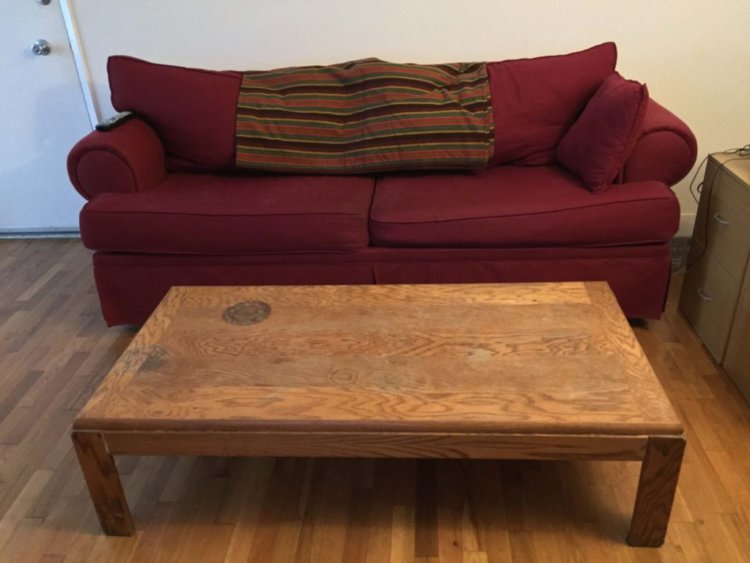
I have a problem with stuff. Not in a way that anyone would want to do a reality show or write a memoir about. But there are things I keep, because they remind me of times and experiences that – and people who – are now squarely in the rearview mirror that is the past. My mother’s ring and other pieces of jewelry that remind me of and make me feel close to her again. A few of the more special condolence cards I received after she died. Drawings from my nieces and nephews that bridge distance and make me feel their love. Album-less photos from the last eight years in L.A. and some from before that I haven’t known how to organize because everything is digital now. My target practice from the one time I went to a shooting range. A bumper sticker that reads “Winfrey/Degeneres 2016,” from the time when we said things like “people with successful TV shows don’t run for office!!” And an appalling number of conference lanyards that remind me of the many titles and roles I’ve had in my life.
Piece by piece, it’s not so hard to find room for this stuff. Some of it is here with me in Los Angeles, while the “old school” stuff – programs from plays I was in, my high school and college yearbooks, a scarf my mother used to wear – still resides in my childhood room in New Jersey. But all of this stuff, in its various locations, also occupies emotional space.
When I got to Los Angeles, I had no furniture. My first bed was an aerobed I bought from a thrift store – it had a hole in it, and slowly deflated overnight, so it was a nightly race: could I squeeze in six hours of sleep before the mattress ran out of air? I collected pieces from friends who were trading up and in a few cases (actual bed and bed frame, then a desk) from Craigslist. One day I was visiting friends on the east side, in a car I’d borrowed from someone who was out of town for three months, and I spied a low, sturdy coffee table on the sidewalk. Maybe it was a bench. Or a table whose legs had been amputated. But I felt it was meant for me. I put it in the car. Obviously, it didn’t fit, and the trunk didn’t close, but friends assured me people drove around with stuff sticking out of their trunks all the time in Los Angeles. And so I drove, slowly, through the streets for 25 minutes, praying I wouldn’t get pulled over. I brought it into the apartment and I could tell instantly that my roommate hated the thing. But it’s always been one of those things that made the apartment feel like it was mine: I had foraged on the streets and taken a piece of someone else’s discarded history into my home, where it would find a second life.
Over the years, it’s been a coffee table and a bench. It’s been a low table that held my roommate’s plants, a role which has left discolored circles on it. In October, I moved it to a different place in the apartment and in the middle of the night, jammed my foot into its leg – this piece of furniture became a literal hazard in my home. This table is past its prime, out of place and living on borrowed time, but I’ve been reluctant to let it go, because of its story, which is partly my story. And that’s one piece of furniture in one room in my apartment. It’s even one of the pieces that I’m less attached to.
While not every couch and bookshelf represents emotional attachment for me, this space is one I built with my roommate and am now reimagining as my own space. It is the space in which I live my present and into which I will welcome special people and moments in the future. I am attached to this space, have grown accustomed to the parts I don’t love, have learned to embrace its quirks and design flaws, because – as with people – the whole is usually worth the compromise.
Recognizing my tendency to imbue objects with meaning and histories, I try to do regular cleanups and reorganizations, once even with the help of a friend who is a professional organizer. She showed me how to organize things: how to say goodbye to things that I could remember through photographs and let go of the actual objects themselves; how to designate a specific area and container for “nostalgia” where I can keep things that are important to me but which I don’t use regularly or at all. I loved this: having a nostalgia box or corner gave me a physical space to store some of my sentimentality.
While there is certainly a point at which such attachment to things as representations of people or moments becomes detrimental to productivity and emotional well-being, I’m not quite there yet. I’m learning to say goodbye to pieces of furniture that have outlived their purpose and to provide structured space for things to which I feel active emotional connection. But I like being able to look at a thing and remember its history; being able to hold a thing and feel the vibration of its story. I think it’s an extension of the writerly instinct, the desire to hear the stories behind things, because those stories also belong to the people who tell them. And like any writer or human in the middle of her own story, I wonder about people’s stories and how the things and the people they encounter help shape their reality, their identity and their future.


Grok Nation Comment Policy
We welcome thoughtful, grokky comments—keep your negativity and spam to yourself. Please read our Comment Policy before commenting.